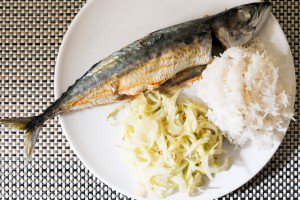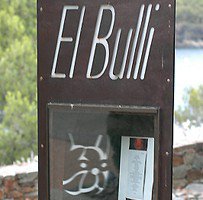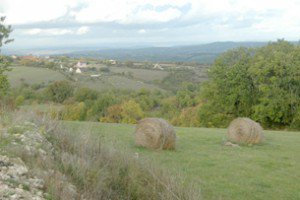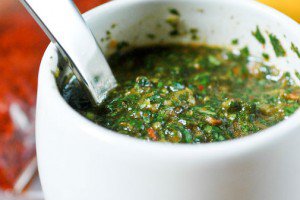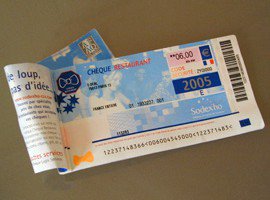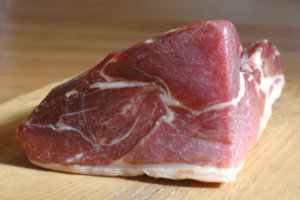
I blame it all on my nephew.
Around the time that he was born, earlier this year, something clicked and I decided to take the whole sustainable seafood thing seriously: if he and his unborn cousins are to enjoy a long life full of lobster tails and skate wings, it is up to me to make informed and responsible choices now.
I had heard of the depletion of the oceans before, but I don’t think I had quite realized how dire the situation is: fish populations the world over are threatened by overfishing, overconsumption, pollution, and fishing techniques that wreak havoc in local ecosystems. If we don’t change our ways fast, major fish species may become extinct as early as 2050.
Like all environmental problems, this is an abysmally complex one, with multitudinous causes, implications, side effects, and collateral damages. And if you factor in other, equally pressing concerns, such as levels of mercury, PCB, and other contaminants, as well as the need to favor locally sourced ingredients, it all becomes rather overwhelming, befuddling, discouraging, check all that apply. Not everyone aspires to become an expert in marine matters, and not everyone has the time or inclination to decode what the experts are saying.
We just want to eat fish and be merry.
It is perhaps tempting then to sit on one’s hands and say, well, I’m just the one consumer, I can’t change the world, and that slab of red tuna on the fish stall or on the menu is already out of the water anyway, so I might as well eat it.
But no; it is best to let that slab of red tuna sit there, uneaten, for it is very much a chicken-or-egg (or rather, a fish-or-roe) matter. As much as we would want them to, restaurants and fish markets aren’t in the business of saving the planet; they’re in the business of making their customers happy.
And if what makes you happy is to feel sure that the fish you buy has been fished or farmed sustainably — that is to say, in a way that ensures that the fish population will be maintained or increased, and that the ecosystem it belongs to is protected — then it will become financially profitable for fish vendors and restaurateurs to care.
So, what to do, what to do?
First of all, you can get a pocket seafood guide that indicates the species you can eat, and those that you should avoid; the list varies depending on the region of the world where you live, and where the fish you can buy comes from. These guidelines are likely to change over time as seafood stocks evolve, so it’s a good idea to get the freshest edition available.
The WWF links to seafood guides for European countries, the Monteray Bay Aquarium offers several for the United States, and this site lists a few more.
I’ve printed a copy of the French version for my purse, to use at the restaurant and at the poissonnerie, and I keep another one on the fridge, to use as a cheat sheet when I’m considering recipes.
(In passing, one feature that would be handy to find in such guides is a substitution chart that would say, “If your recipe calls for [species to avoid], consider using [sustainable alternative] instead.”.)
The pocket guide is a good start but, as a black-and-white view of a situation that has many shades of grey, it is not the magic shield one could hope for. Fish comes in so many varieties and under so many different names that the list cannot possibly be exhaustive, and imprecise labelling — when it is not intentional mislabelling — is a frequent hurdle on the responsible eater’s path.
The only option then is to ask questions, whether at the fish counter or at the restaurant: what kind of fish is it, where does it come from, how was it farmed/caught?
Admittedly, this is not the easiest thing to do — especially in France, where vendors and waiters are known to get defensive, and where well-intentioned curiosity is occasionally met with a take-it-or-leave-it-mademoiselle attitude. The trick is to adopt just the right tone so as not to sound high-and-mighty, yet make it clear how important it is to you.
One can only hope that, if enough consumers show concern, fish vendors and restaurant owners will be just as inquisitive with their suppliers — if only to get us to shut up.
Lastly, an important thing we can all do is spread the word. A small portion of the public is even aware that there is a problem in the first place and, as eager cooks, as passionate eaters, we are in a position to alert and inform our friends, family, coworkers, and, if we happen to run a food blog*, our readers. I’m not suggesting the soapbox approach — has that ever worked for anyone? — but rather gentle nudges and offhand remarks, at the restaurant and at the shop, in the kitchen and at the table.
What about you? How do you deal with the sustainable seafood dilemma? Do you have resources, strategies, or thoughts to share on how to make better choices?
Recommended reading and resources:
– A series of posts written by an Australian marine ecologist.
– A Chef’s Guide to Sourcing Sustainable Seafood, available for download from Chefs Collaborative.
– An online compilation of international seafood guides.
– The Monteray Bay Aquarium’s Seafood Watch.
– The Oceans Today on the Marine Stewardship Council’s website.
– The Marine Conservation Society’s FishOnline website.
– The Environmental Defense Fund’s seafood selector.
* If you have a food blog, consider participating in the upcoming edition of Teach a Man to Fish this October. Teach a Man to Fish is a food blogging event that promotes sustainable seafood; don’t miss the wrap-up of last year’s edition.


